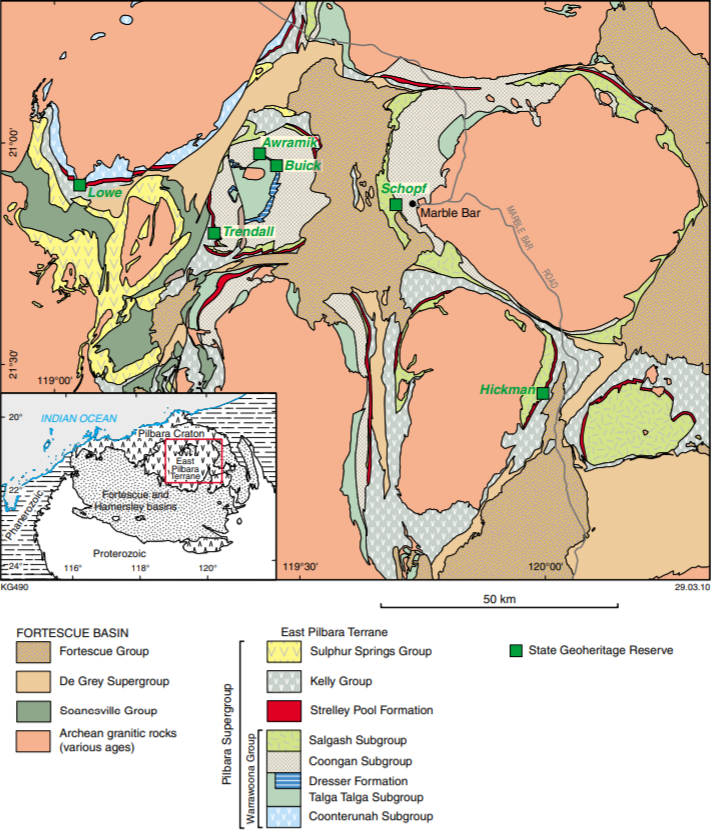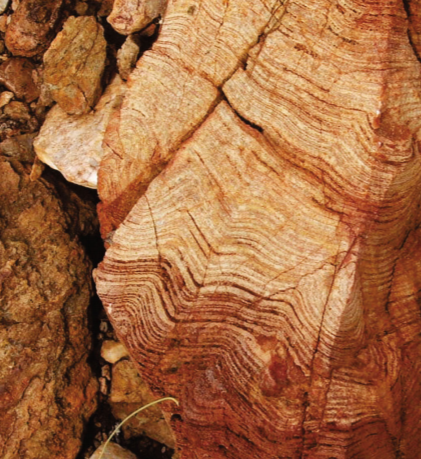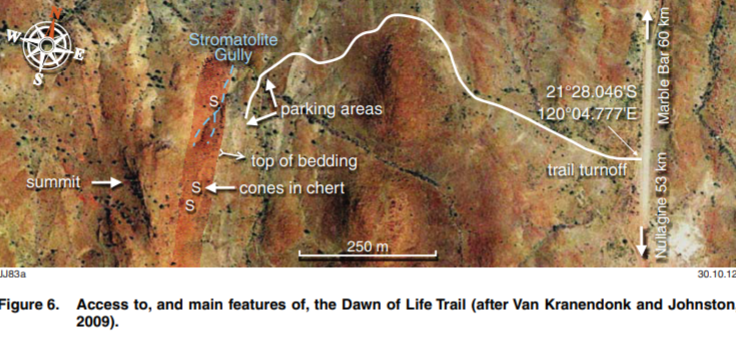GEOGRAPHIC EXTREMES SOCIETY
AUSTRALIAN RECORDS
Earliest Life
In 1980 West Australian geologist, Malcolm Walter was working near disused mines around Marble Bar when he discovered evidence of ancient stromatolites in a formation of rocks, known as barite. When the results of dating came back at 3.49 billion years old, Walter realised that he been looking at the first signs of life on the planet. This area around the North Pole and what we know as the Dresser and Strelley Pool formation has proved to exhibit the most abundant and best-preserved evidence of early life on planet Earth. Six of these sites have formed a proposed Geoheritage trail in Western Australia.

THE PROPOSED DAWN OF LIFE GEOTOURISM TRAIL, MARBLE BAR, PILBARA CRATON, WESTERN AUSTRALIA — GEOLOGY AND EVIDENCE FOR EARLY LIFE by K Grey, JDA Clarke , and AH Hickman
These ancient stromatolites are now in protected areas, the Buick Reserve and slightly younger Trendall Reserve are the oldest of these geological sanctuaries.

Strelley pool Stromatolite. Image supplied by Geological Survey of Western Australia
The earliest of all biological organisms had to endure an environment most-often described as primordial soup. Three billion years ago, Earth’s moon was much closer and rapidly orbiting. This generated ancient mega-tides, which pulsated vigorously in the shallow sulphurous seas. Volcanism abounded, and the Earth’s youthful atmosphere was highly acidic and drowning in carbon dioxide. Against this backdrop, early life proliferated in the Pilbara area
The site where Malcolm Walter was working was the curiously named North Pole Mine. Its naming derives not from a perverse joke relating to the heat of the Pilbara. It arose from a magnetic signature in the rocks, determining that the location of this region was once at the Magnetic North Pole.

There is a proposed site for Geoheritage visitors on the road between Marble Bar and Nullagine. This is the Hickman reserve showcasing stromatolites from the Strelley Pool Formation and the most accessible of the Geoheritage trail sites.
GES Record : First signs of biological life on Earth – Buick Reserve stromatolites. 3.45 billion years old.
The Geographic Extremes Society welcomes any input as to the veracity of these records and we encourage everyone to contribute to these extreme records by contacting us to initiate the discussion
